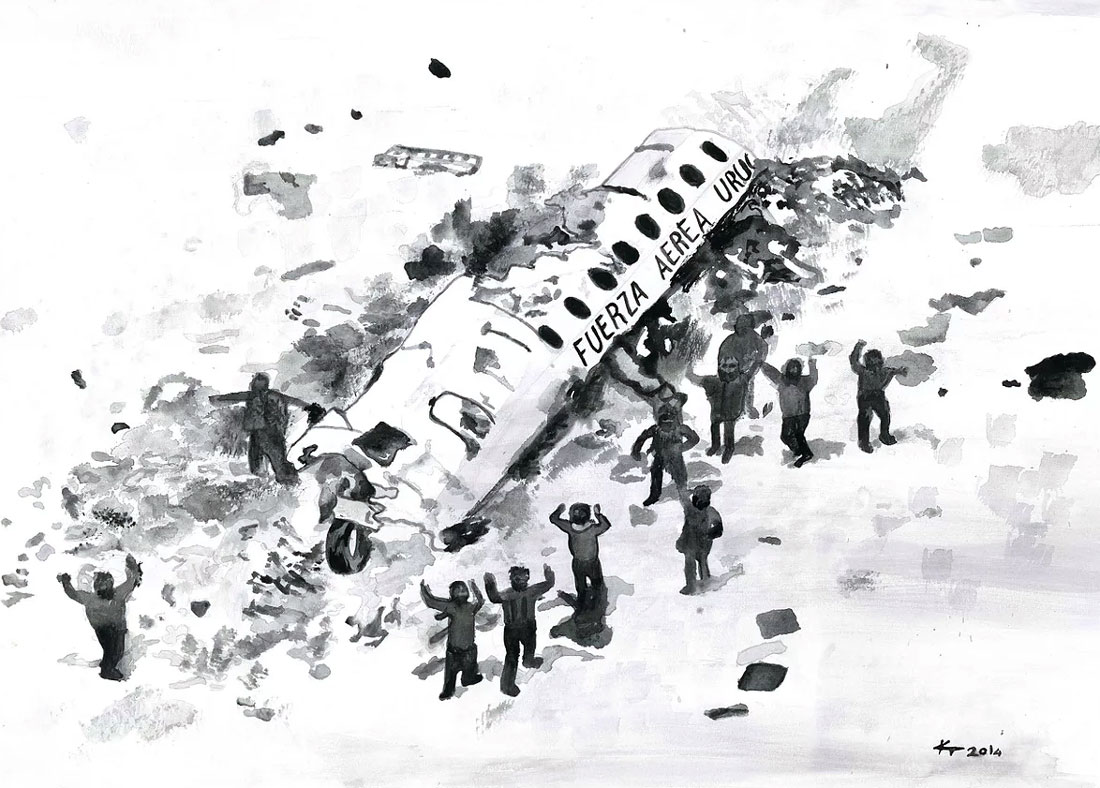A history reveal
On Friday, October 13th, 1972, a Uruguayan Fairchild 227 airplane (with a rugby team on board) crashed in the Andes. This was the beginning of one of the most overwhelming stories of survival in human history.
Initially, 32 people survived the crash against one of the highest mountain chains in the world. Many of them were seriously injured. At 4000 m above sea level, with neither appropriate clothing nor food; surrounded and trapped in the mountains, they almost died from the extremely low temperatures.
Their very limited provisions, consisting of a few sweets, some cans with food and a couple of bottles of alcoholic beverages, quickly ran out. For ten long days they waited to be rescued. Then they heard on the small pocket receiver that the search had been called off.
But things got even worse on the night of day 16 when an avalanche hit them while they were sleeping in the remains of the fuselage, burying them completely and killing eight people. From the 45 passengers and crew members, finally only sixteen survived.
In order to withstand the extreme weather conditions and temperatures below -30 ºC (-22 ºF) many things were re-invented. For instance: in spite of the low temperatures, they learned how to produce water from snow. They used the fabric of the seat covers as quilts. The most critical issue was how to face the lack of food. This forced them to make a very tough, difficult and controversial decision. They used the bodies of their dead mates.
In midst of this desperate situation they made many attempts to get out of that valley.
The final and successful attempt was made by two of them. After hiking for 10 long and endless days under extreme geographical conditions, they came across a cattle drover. This man then rode for 8 hours to the next Police station in order to report his encounter and seek help. His response –and generous attitude– put an end to the 72 days of horror, pain, hunger, desperation… but also brought hope of a brighter future.
